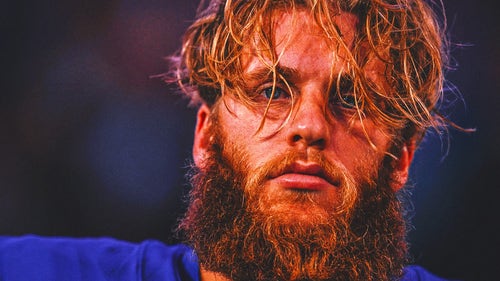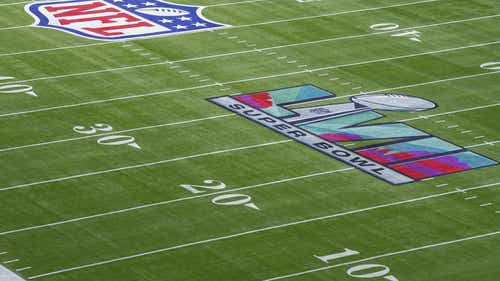
Patriots are good on draft day, too
Though the Carolina Panthers own the top overall pick on April 28, the real power brokers of the 2011 NFL draft are the Patriots of New England.
What’s new?
Through years of disciplined trading down and an uninterrupted stockpiling of future draft picks, Bill Belichick’s Patriots — fresh off a 14-2 campaign in 2010 — head into April’s draft with a mind-boggling three of the first 33 selections. New England also owns six of the first 92 picks and has a total of nine picks in the first six rounds. If late first-round and early second-round picks are considered the coveted booty of the NFL draft, New England’s sitting on a treasure chest this year.
How’d the Patriots acquire and accumulate such draft weekend wealth? Via years of trading veteran players and making draft-day swaps for future draft selections. Every April for the past few years, New England has had a constant eye on the future.
And, well, the future is apparently now.
The Patriots traded Richard Seymour in 2009 for Oakland’s 2011 first-round pick (17th overall), they exchanged a 2010 third-round pick for Carolina’s 2011 second-round selection (33rd overall) during last year’s draft and they secured a 2011 Minnesota third-rounder (92nd overall) for Randy Moss in October. Finally, they scored a fourth-rounder from Josh McDaniels and the Broncos for Laurence Maroney — who did absolutely nothing for Denver in 2010 — and a sixth-round pick. Jackpot. Jackpot. Jackpot. Jackpot.
In a draft that’s absolutely loaded with first- and second-round defensive line talent — and a bevy of first-round offensive tackle talent likely still on the board when New England’s on the clock with its 17th, 28th and 33rd picks overall — things certainly seemed to have worked out in New England’s favor this year.
But why should we be so foolish to assume New England’s going to stay put and actually use its coveted picks come April? If we’ve learned anything from the past few years, it’s that Belichick and Co. would rather pay their picks forward, load up on later-round selections and save a bit of rookie signing bonus coin in the interim.
Sure, New England had three second-round picks entering last year’s draft. And, yes, the Pats ended up selecting three players in the second round. They just didn’t take all of them in their original draft slots.
In 2009 and 2010, New England ended up with 12 draft picks in each. In 2006, they finished with 10. Want a stat to noodle on? From ’06 to ’10, they made 23 different draft selections with picks acquired through trades.
Belichick is certainly committed to his draft strategy. With the security granted by three Super Bowl rings and four NFL Coach of the Year awards in his back pocket, the man in the hood no longer needs to “land” a prized first-round pick to gain his owner’s trust or appease the franchise’s fan base. Instead, he can rely on his highly paid quarterback and his collection of top-flight defensive talent, while getting by with late first-round picks, second- and third-day selections and undrafted rookie free agents picked up off the scrap heap.
A younger or less accomplished coach or general manager — with pressure to prove short-term, immediate draft-day successes — might not show the patience and/or dedication needed to pull off Belichick’s draft strategy. He has the luxury of thinking long term with his draft picks, when other coaches, GMs and front-office types might be focused on year-to-year results and what can help them immediately.
As of mid-March, New England owns three of the first 33 picks and is the absolute envy of 31 other teams’ front offices.
They shouldn’t worry. They’ll be hearing from the Patriots soon enough.
Remember when: Forgettable moments in NFL draft history
My, what a difference 19 years can make.
It’s amazing to even consider this now, but in 1992 — before there was NFL free agency, the Houston Texans or the Dougie — the Indianapolis Colts not only had the first pick in the draft but they had the second one, too. Ted Marchibroda’s Colts were the first team to own the first two picks in a draft since 1958.
Indianapolis went 1-15 the year before and needed players all over the field, on both sides of the ball. Jack Trudeau was a quarterback — backing up Jason Whitlock’s boy, Jeff George — on those woeful early '90s Colts squads. I asked Trudeau, now the host of the national morning show on FOX Sports Radio, to reflect on what the feeling was like in the Colts facility in the month leading up to his squad having the top two picks of the draft. Here are his thoughts:
“I remember that we were a team that had not drafted very well in recent years, and despite our 1-15 record, we felt that we were still on the verge of being a very good team. We had a lot of injuries in 1991, so there was doubt across the organization over who’d be around in '92. We were lacking in overall speed on our team, and a lot of us thought speed and offensive firepower were what we needed with those first two picks. We’d lost Andre Rison and Chris Hinton in recent years — two of our speedsters — and I thought at least one of those picks would be an offensive weapon. I think the team fell in love with the physical talents of Quentin Corryatt and Steve Emtman, though, and that’s the direction they went.
“I wanted a wide receiver. Go figure
“The amazing thing to look back on now, though, is how little was made of us having the top two picks at the time. The news cycle back then was nothing like it is today. I mean, if I had to scale the difference from then and now, I would put us a two on a 10 scale for that year, and a 15 on the 10 scale for this year. It wasn’t even 20 years ago, but back then, you did not know about any of the college players, and when the draft happened, it was like, ‘Who are these guys and why are we taking them?'
“Injuries hurt both Steve and Quintin and derailed their careers. Emtman had bad knee injuries two years in a row and never helped.”
Thanks, Jack. You can listen to Jack and his colleague Dominic “Zakk” Zaccagnini 6-9 a.m. ET weekdays on FOX Sports Radio.
A guy you've never heard of whom you should probably get to know, Version 1.0
Greg Salas, WR, Hawaii: There’s an awfully long list of receivers in this year’s draft who can run a 40-yard dash faster than this guy. How’d he fare in his first go at the 40 in Indianapolis last month? Well, he left scouts with their jaws dragging on the Lucas Oil Stadium floor with an official time of . . . 5.0.
Yep, a 5.0 40-yard dash time from a wide receiver.
When he lined up a few moments later for a second crack at it, he ran a far more acceptable — though not ideal — 4.57.
Salas’ agent, Kenny Zuckerman, told reporters the 5.0 was a timing error, a mechanical misfunction. "We knew it wasn't a 5 flat. We knew it was in the 4.5 range."
Whether he can run a 40 in five seconds or 4.5 seconds shouldn’t matter all that much come April’s draft, though. Salas put up unquestionably huge numbers in four years at Hawaii and already possesses the football savvy of a veteran NFL wideout. He’s got the goods.
In four years at Hawaii, Salas caught 285 balls for 4,345 yards and scored 26 career touchdowns. To put those numbers into context, consider that, in four years at LSU, Carolina Panthers 2010 third-round pick Brandon LaFell caught 175 balls for 2,517 yards. Sure, Salas put up his stats in a pass-happy offense in the WAC, but 285 receptions are 285 receptions.
What he might lack in speed, Salas makes up in footwork, hands and precise route-running skills. He was at his very best in his final collegiate game — last year’s Hawaii Bowl vs. Tulsa. In a loss, he caught 13 balls for a career-high 214 yards and two touchdowns. As the game tape reveals, Salas caught passes on slant routes, go routes and while facing double coverage. He’s tough, he’s smart and he’s just plain good.
At 6-feet-1, 210 pounds, Salas has an NFL receiver’s frame and above-average hands. Brandon Marshall ran a 4.5 40-yard dash. Anquan Boldin ran a 4.71. Even Jerry Rice, NFL Films’ anointed “Greatest NFL Player of All Time,” reportedly ran a 4.63 40-yard dash.
Too many receivers — including Salas’ college teammate and current Miami Dolphins underneath threat Davone Bess — have been penalized come draft weekend for poor 40 times. It’s silly.
Salas can play football, and he can certainly play receiver in the NFL.
A team will be very happy to have him — and that unflattering 40 time — on its roster.
Schrager Draft Projection: Fourth Round
'On the Clock' Trivia Question of the Week
If the Carolina Panthers take Patrick Peterson with the top pick in this year’s draft, he’ll be the third LSU Tiger selected first overall. Can you name the other two LSU players taken with No. 1 picks?
Answer below.
Reader e-mail of the week
Peter,
I always enjoy your annual “Live from Radio City” coverage during the draft’s first round. Will the spirit and enthusiasm of that room change dramatically if the actual prospects aren’t there, live and in person?
Von,
Meadow, Texas
Von,
I appreciate the feedback. As for the draft itself, believe it or not, the players play very little to no role in the actual NFL fan experience at Radio City Music Hall. The prospects are in suits backstage in the green room for the bulk of the night until their names are announced. When they finally are selected, they walk on stage, shake commissioner Roger Goodell’s hand, put on a ball cap, pose for a few photographs, and then vanish into the Manhattan night.
Many of the top prospects don’t even attend the draft anymore. Some, like Tim Tebow last year, come up to New York City to promote the new Electronic Arts college football video game at a draft party, then skip town before the actual draft itself.
Like they do year after year, fans will come to New York City from all corners of the country to attend the draft. And they’ll love it.
That moment with Goodell on stage is not for the fans’ enjoyment, though. That moment is for the kids getting drafted. It’s something they’ve dreamed about for years. If the trade association formerly known as the NFLPA is recommending prospects boycott the draft, they’re suggesting these kids sacrifice potentially the biggest moment of their lives for their future union.
Hey, that’s fair enough. But it won’t be the fans who are impacted.
For maybe the first time since all this labor talk took over the national football conversation, it’ll be the players — not the fans — who’ll be losing out.
'On the Clock' Trivia Answer of the Week
JaMarcus Russell was taken with the first pick of the 2007 NFL draft by the Oakland Raiders. He’s out of the NFL. Fellow LSU Tiger great Billy Cannon was picked first overall by the Los Angeles Rams in the 1960 NFL draft but opted to sign with the Houston Oilers of the AFL instead. Cannon is one of 20 men to have played in the AFL all 10 years of the league’s existence.










